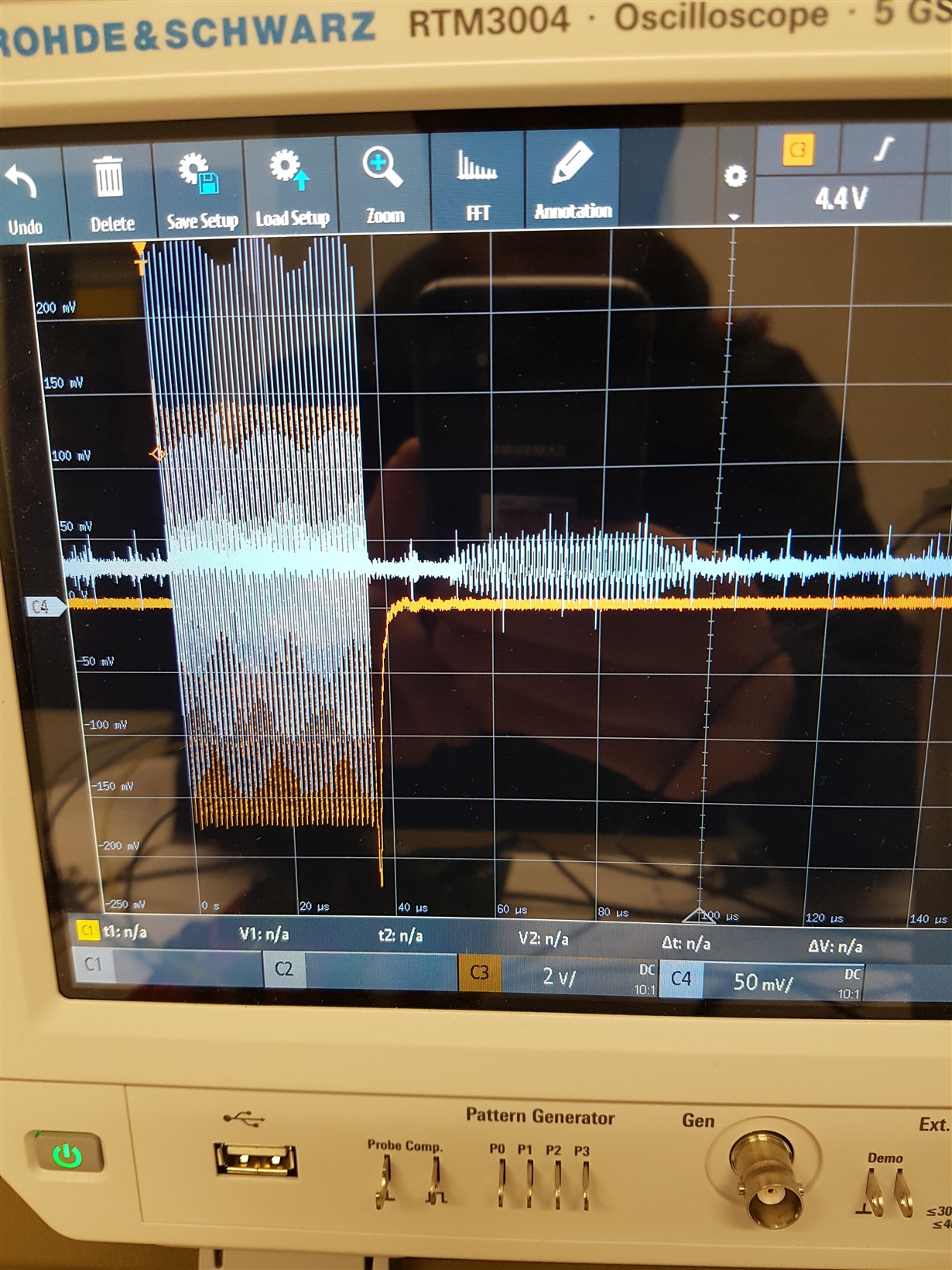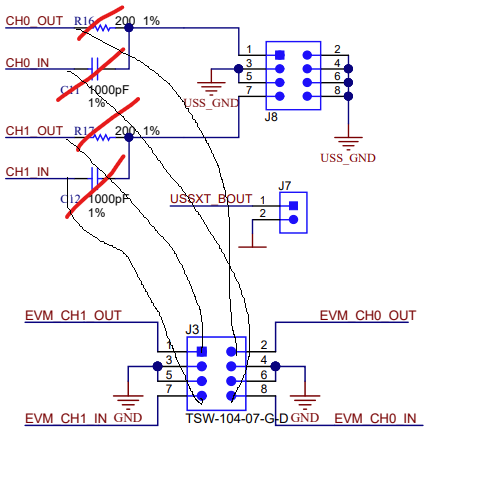Other Parts Discussed in Thread: EVM430-FR6047, , MSP430FR6047, TS5A3357, THS3095
Hello,
I use the EVM430-FR6047 for ultrasonic volume flow measurement and the TIDA-01486 reference design.
After connecting the TIDA-01486 to the EVM430-FR6047, no receiving signal is detected by the EVM430-FR6047. In parallel I can measure the receiving signal with an Oscilloscope direct at the receiving sensor. After checking the single components, I saw that the receiving signal is smoothed out after the capacitor of the PZT connector.
The capacity of my sensor is approx. 1600 pF. Is there a way to change components and not smoothing out the signal?
Since we don't need the OP amplifier, we thought about connecting the response directly to the EVM.





